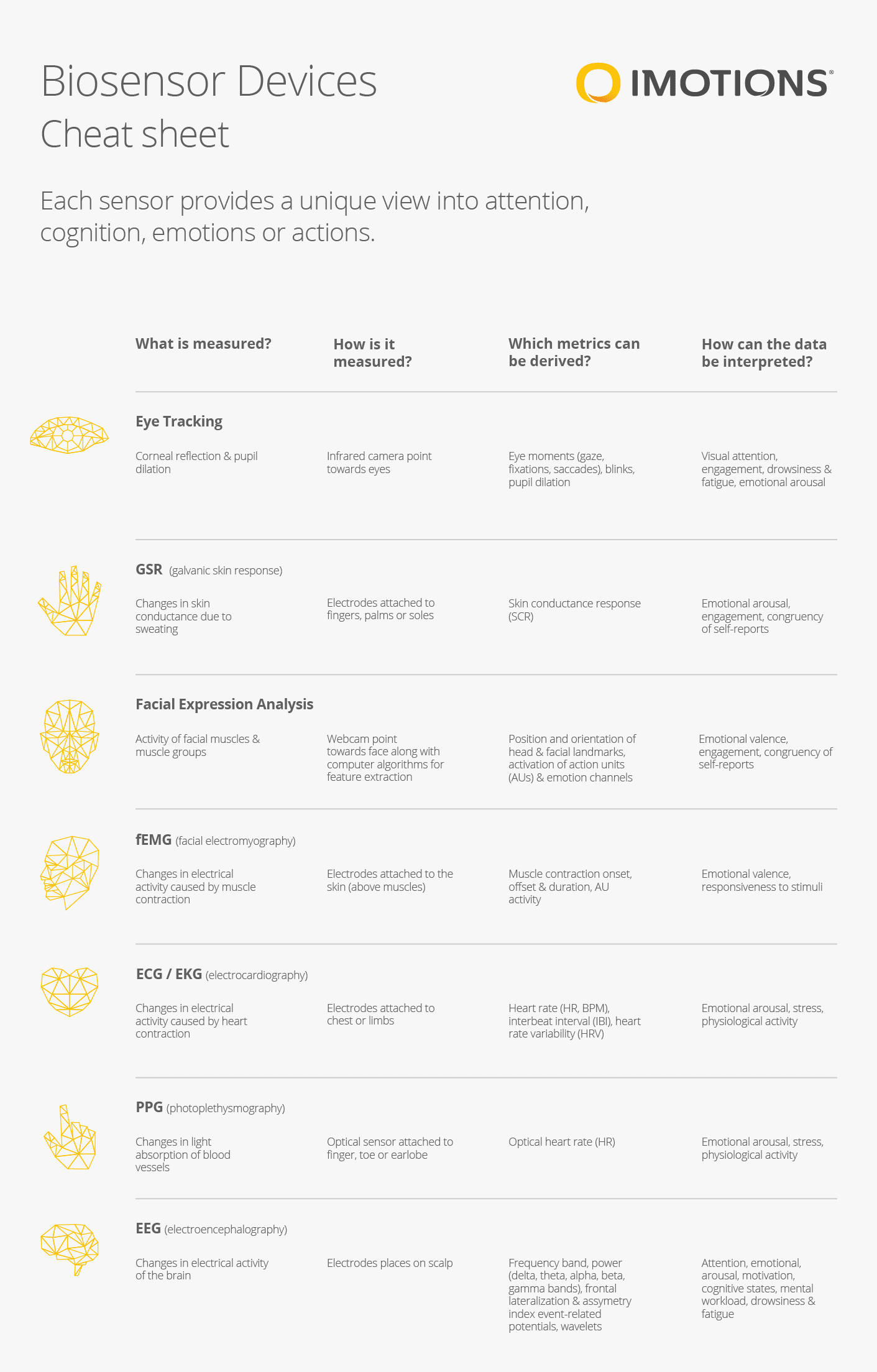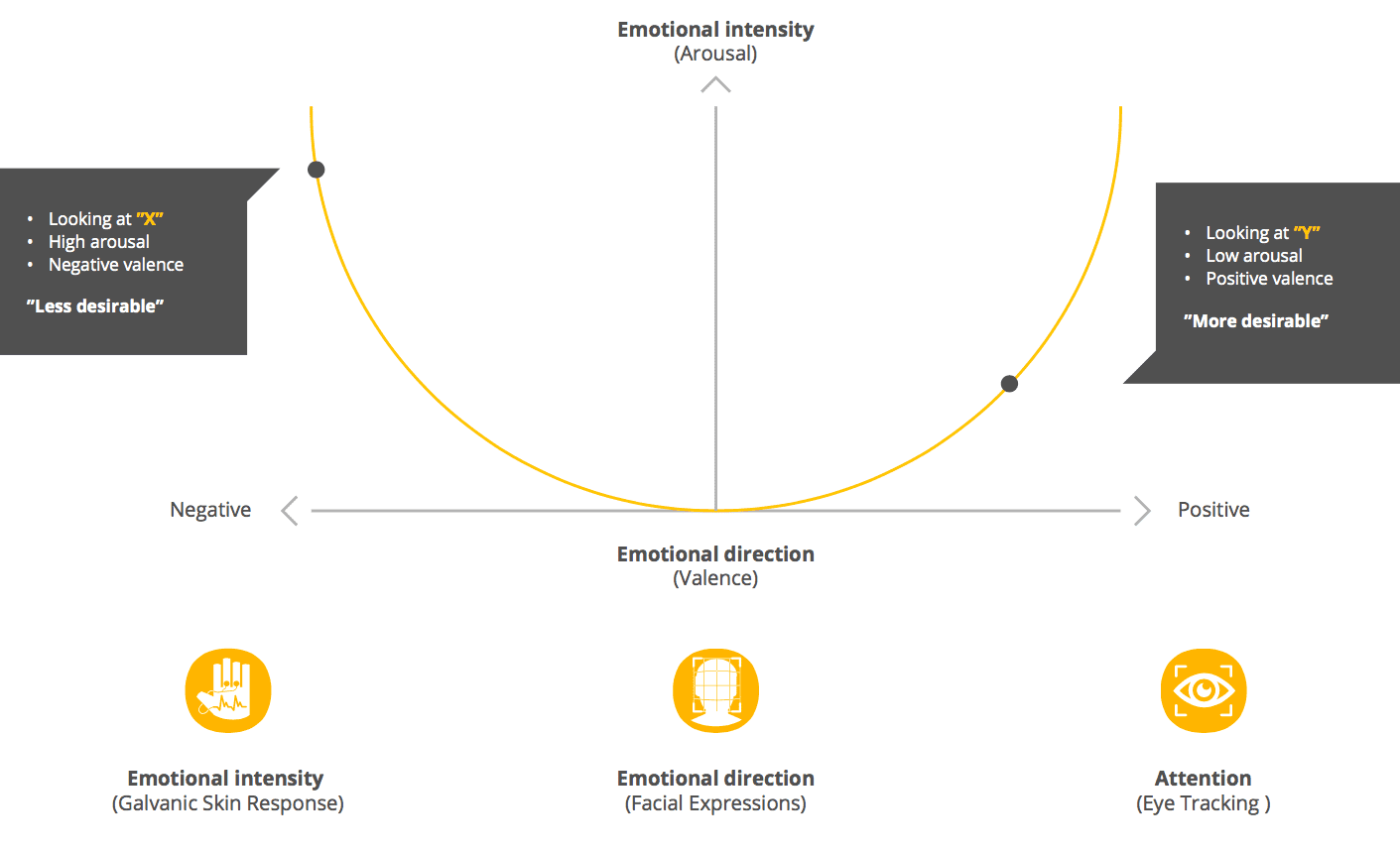Human behavior can be measured in a multitude of ways, which is why we have made – and now updated – the chart below to guide you with choosing your ideal measurement.
Human behavior is a complex interplay of a variety of different processes, ranging from completely unconscious modulations of emotional reactions to decision-making based on conscious thoughts and cognition. In fact, each of our emotional and cognitive responses is driven by factors such as arousal, workload, and environmental conditions that impact our physiological state in that very moment.
“I want to measure human behavior. Which biosensor should I use?”
Below is your kick-start to the what, how, and why of biometric measurements in one handy format.

To help you peek beneath the surface of human behavior and its underlying processes, we recently have set you up with the ins and outs of Eye Tracking EEG, GSR, and Facial Expression Analysis.
Admittedly, if you are new to the field it can be quite overwhelming to gain a solid overview of the different biometric sensors and the available metrics (let alone the interpretation of physiological data), given the fact that each modality will provide insight into a specific key aspect of human behavior.
Here you can see emotional valence and intensity visualized in a graph.

Which sensor is the most suitable to address your research question? Is one sensor alone able to deliver all the insights you seek or should you rather opt for multiple sensors to get to the bottom of things? With the help of the chart above, you should be a step closer to answering these questions.
I hope this gives you some deeper insights into the world of human behavior measurements. If you have any questions you are always more than welcome to contact us.












